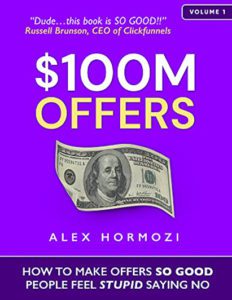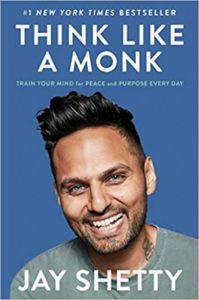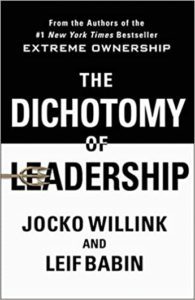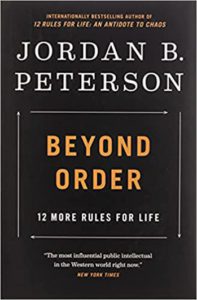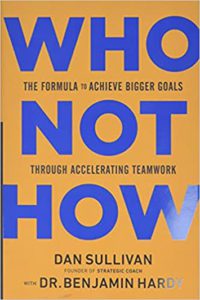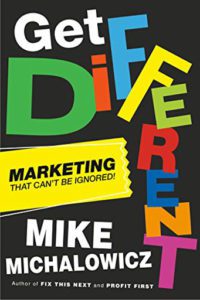Read these books before 2022 to get a jump on your competition!
What are the Top 5 lessons you’ve learned from books that have actually helped your business?
My current Audible library hit 150 books (I’m on my third account now). My bookshelves at home and work are overflowing (and I try to give books away after I’ve read them). I listen to at least an hour of podcasts every day, I read blogs, I take courses—and I doubt I’m alone.
So what, in those thousands of hours of acquiring knowledge, has actually made a measurable difference in my business?
As I was preparing this list for 2021, I struggled with that question. I don’t just want to give you a list of popular books or well-written books—I want to give you a list of books that actually created more money or time for me.
So here we go: my best books of the last 12 months for gym owners, with the specific lesson (and value!) included.
“$100M Offers: How to Make Offers So Good People Feel Stupid Saying No” by Alex Hormozi
If you’re thinking about selling a “high-ticket” item—or you just need to understand why some gyms can charge 10 times what you’re charging, this is a great book and an easy read.
The second and third sections are particularly helpful because they force you to see your business through the eyes of your client and rearrange your services accordingly. Your value is determined by your client, not by your price.
The best exercise in the book: Think about the problems your clients will encounter when they’re trying to lose weight. Brainstorm all the ways you could solve those problems (even including living in their houses). Then identify the strategy that will get the client the desired result but take up the least amount of your time. This “client-centric” approach is a real dose of reality for professionals who just want to coach classes all day (like me).
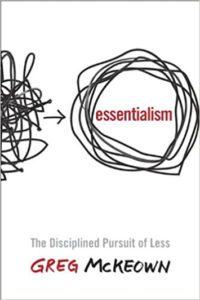
“Essentialism: The Disciplined Pursuit of Less” by Greg McKeown
We all overdeliver. But are we really best to give our clients everything—or would we be better off giving them only the exact thing they need when they need it?
I’m super guilty of this: Our Two-Brain Growth ToolKit has over 400 courses on it because I want to give gym owners everything they could possibly need, curated by proof and arranged in order of impact. But no one needs all 400 things. And if you give gym owners a list of 400 things they could do, they’re gonna try to do them all!
After reading Greg McKeown’s book, my fears were confirmed: I need to give people only the most important things to do.
In your gym, this means removing options instead of adding them. It means telling your clients exactly what they need with full transparency (instead of just suggesting what you think they can afford). It means constantly auditing your time and using measuring sticks like Effective Hourly Rate to keep you focused. Value doesn’t always mean “more.” In our current age of overwhelm, value usually means “just enough.”

“Steal the Show: From Speeches to Job Interviews to Deal-Closing Pitches, How to Guarantee a Standing Ovation for all the Performances in Your Life” by Michael Port
How will a book on public speaking make you a better coach? I mean, you can already yell really loud, right?
Think of your one-hour class or your 30-minute appointment as a performance. That performance has an introduction, a slow build of excitement leading to a climax, and then a finale that leaves everyone happy.
Planning your sessions this way means your clients will be more excited about your service (and Port breaks it all down step by step). It will help you keep clients coming back. And for me, it meant no more boring conversations in client sessions. You know what I’m talking about: You have five personal-training clients in a row and start the same conversation with each one over and over. You get bored and then tired. Port’s book changed all that for me.
When you lead a class or a session, you step onstage. Most of the time you’re with a client, you’re onstage (they rarely ever see “backstage”—and they shouldn’t). They won’t remember how much you know but how engaging, how interested and how entertaining you were. Bored clients quit. That doesn’t mean you need to wear tap shoes, but it does mean you should think about how you present yourself.
“Think Like a Monk: Train Your Mind for Peace and Purpose Every Day” by Jay Shetty
This was the first book I’ve ever finished and replayed right away. (I actually went through it three times before I moved on to another book.)
Shetty takes all the mysticism out of meditation, mindfulness and inner peace. He gives you great stories from his time as a monk but then provides specific exercises to calm yourself, refocus and destress. This book is like an operating system for the modern brain; you don’t need to learn to meditate (though Shetty talks you through it), and I use his quick exercises every single day.
In my office, I keep a few boxes full of books to give away. I keep a dozen copies of “How to Win Friends and Influence People,” “Rich Dad, Poor Dad” and “My Super Me” (for kids) on hand and give them away to any entrepreneur who visits. Shetty’s book is the fourth that I’ve purchased in bulk for that purpose.
“The Dichotomy of Leadership: Balancing the Challenges of Extreme Ownership to Lead and Win” by Jocko Willink and Leif Babin
I read this one because Jocko headlined our Summit in 2021. It was a huge surprise. I liked this book more than “Extreme Ownership” (which I really liked). While “Extreme Ownership” can be summed up on the back of a napkin, this book was a revelation: Great leadership is really about clarity in the moment but balance in the long term.
It’s easy for me, as a business mentor, to answer every question with “it depends.” But this book is an amazing illustration of the dichotomies many leaders face, how opposing answers can be “right” at different times, and how to maintain a balanced perspective for a long time.
Great leaders have playbooks, but they know which plays to call and when.
“Beyond Order: 12 More Rules for Life” by Jordan Peterson
I was a fan of Peterson’s last book, but this one made me a fan of Peterson. In this book, Peterson actually argues in support of a perspective that’s opposite the position in his first book. That takes a very flexible mind.
For example, Peterson says this (I’m paraphrasing): “It’s OK if you don’t want to go to church. It’s OK if you’re not a Christian. But what system of values are you replacing Christianity with?” Any answer, according to Peterson, is fine—but if you don’t have a system of values that you follow and can explain to others or teach your kids, then you don’t really have a system of values. That means you’re acting on whims all the time, and you’re unpredictable to the people around you.
Peterson isn’t arguing for or against religion; he’s advocating for systems. Many people attend church because they like the routines, the processes, the atmosphere or something else. They’re comforted by the predictability of church: They know the people, they know the hymns, and they know when to kneel and when to sit and when to stand. These are all systems, and we can learn from them. Clearer systems are better.
Of course, these systems can be taken to the extreme (and Peterson shares those examples, too). But putting rules in place in your gym doesn’t make you OCD; rules make you trustworthy and predictable.
“Who Not How: The Formula to Achieve Bigger Goals Through Accelerating Teamwork” by Dan Sullivan and Dr. Benjamin Hardy
This book is one of many good entry points to the Dan Sullivan rabbit hole (I followed this book with a stream of five more Sullivan books in rapid succession).
Sullivan is big on systems, so this isn’t another “just get the right people on the bus” book. Instead, Sullivan suggests finding “doers” and then mentoring them to success. For example, Sullivan gets pitched on a dozen new ideas every week. Most of them sound like “you should do this!” But occasionally, someone will say, “Hey, Dan. I could do this thing for you if you give me permission.” That’s extremely different. In these cases, Dan gives the person permission, time or money, and they build something that he didn’t have time to build on his own (this book is a great example).
Top lesson: You can’t just hire people and expect them to move your business forward. Instead, wait for the right people who can tell you exactly what they’ll do, and then remove barriers for them.
The book is really just a clearer version of Sullivan’s “Simplifier-Multiplier Collaboration,” but I also recommend his books “Always Be the Buyer” and “Who Do You Want to Be a Hero To?”
“Get Different” by Mike Michalowicz
Michalowicz celebrated his book launch in our Tinker group a few weeks ago, and he didn’t disappoint.
Instead of Mike’s usual tactical approach to business, his marketing book went broad, teaching some foundational lessons for entrepreneurs. In “Get Different,” Michalowicz shares a few lessons that are both important and timeless.
For example, his “DAD” framework for marketing is really simple—but a lot of gym owners actually fail at marketing because they don’t provide an affirmative answer to one of these questions:
- Does it differentiate?
- Does it attract?
- Does it direct?
For example, can clients tell the difference between your gym and the one down the street without setting foot inside?
Are they attracted by the pictures and media they see or are you pushing people away?
Do you tell them exactly what step to take next?
These “duh, I should have thought of that” revelations are what make Michalowicz books worth reading. Genius makes the complex simple, and Michalowicz does a great job of simplifying marketing in this book.
Books You Can Skip in 2022
“BE 2.0 (Beyond Entrepreneurship 2.0): Turning Your Business into an Enduring Great Company” by Jim Collins
I wrote about my voicemail from Jim Collins in last year’s “Best Books” guide. Jim’s kind of a hero to a data-driven entrepreneur like me. What makes Collins’s books such epics is that he uses the data to tell a story. This book was written to update what he originally wrote, but it’s not a dramatic upgrade.
“Leading From Anywhere: The Essential Guide to Managing Remote Teams” by David Burkus
I was really excited to get this one because I have a huge remote team. Leadership in person is hard; keeping people excited and engaged over Zoom is unknown territory. So I was excited to read some proven best practices. Unfortunately, this book was full of ideas (unproven) and really obvious strategies.
Click here to read Chris Cooper’s 2020 list of best books.
Knowledge—and Action
I love books and courses and seminars.
But there’s a difference between acquiring knowledge and knowing the answer. We like to feel smart; we like to show off our reading list. But success really comes down to the application of knowledge: Do you know which tactic to use right now?
A mentor can help with that part.

